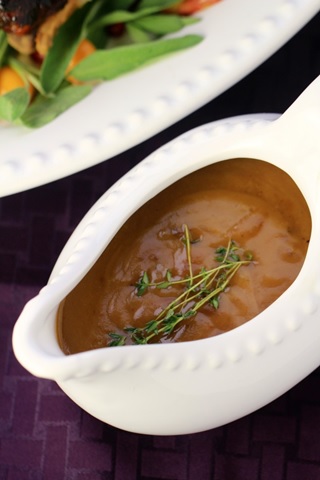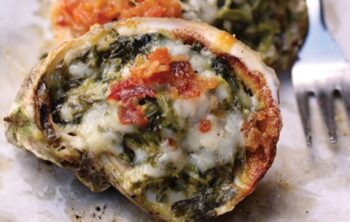
Gravy is a must have on any thanksgiving dinner table or anytime you roast a turkey for that matter. But most people just resort to using a jar of premade turkey gravy or use the powder that comes in a pouch you just mix with water. While these ideas may suffice, they will not stand a chance to real homemade turkey gravy made from the drippings. The drippings come from the leftover juices after the turkey cooks. They make a great base for turkey gravy as well.
Choosing the Best Ingredient
There really isn’t much choosing of ingredients when using the drippings of the turkey. However, there are a few ingredients you can add to your turkey while it roasts to bump up the flavor of the pan drippings. Make sure to use vegetables like onions, garlic cloves, carrots, celery and citrus. You can also use bacon to keep the turkey moist and add to the pan drippings as well. Also, the seasoning you put on the turkey will also have a play as well as the fresh herbs. Herbs like thyme rosemary and sage work great with turkey and can even be added again when you make the actual gravy. You can also add a little chicken or turkey broth to the drippings if there is not enough fluid to make the gravy.
Preparing the Ingredients
Once the turkey has finished roasting, drain all of the pan drippings into a clear measuring cup that can fit all the liquid. It doesn’t have to be clear but it will help later on. Allow the juice to settle after a couple of minutes, then the fat should separate from the liquid and sit on top. Use a spoon to skim the fat off of the liquid and place it in a small bowl. You can use the oil and fat you skimmed off to make the roux and if the liquid isn’t enough adding a little chicken stock to fit the amount of gravy you want to end up with.
During the Cooking Process
Make sure the liquid is boiling before you add the roux, otherwise you will not end up with gravy. The gravy will separate and you will be left with a mess. Make sure to whisk the entire time too otherwise it will clump up and possibly burn the bottom of the pan. When the gravy thickens, make sure to remove it from the heat immediately, otherwise the gravy will continue to thicken. If this happens, you can add a little water a bit at a time while whisking to thin the gravy out a little.
The Final Touches
Once the gravy is finished, you can pass it through a sieve or a thin eyed colander to try and strain any extra bits out of the gravy. This will make it very smooth and may thin it out a bit. But some people like to have the bits in their gravy so it is really up to you. Other than that, you can add some fresh herbs or re-season the gravy if it needs it at this point. Next all you have to do is transfer it to a gravy boat or serve it out of the pan you used.
Steps:
- After cooking the turkey, transfer the pan drippings to a clear vessel and let it rest for a few minutes until everything settles and the fat separates from the liquid. Carefully, remove the fat from the vessel with a spoon by skimming the top. Place the fat in a separate bowl and save.
- Once the fat is separated, add some flour to the it (about equal parts flour to fat by volume) and whisk it until a roux forms that is smooth and shiny. If it is too thick, add a little oil. If it is too thin, add a little more flour.
- Place the liquid from the pan drippings in a saucepot and place on the stovetop over medium high heat. Once the liquid begins to boil, whisk the liquid constantly and gently pour in the roux constantly at a slow pace. The gravy will begin to thicken as you stir. Once it has come to the consistency to desire, remove it from the heat immediately.
- Pour the gravy into a gravy boat or serving dish, serve and enjoy!


